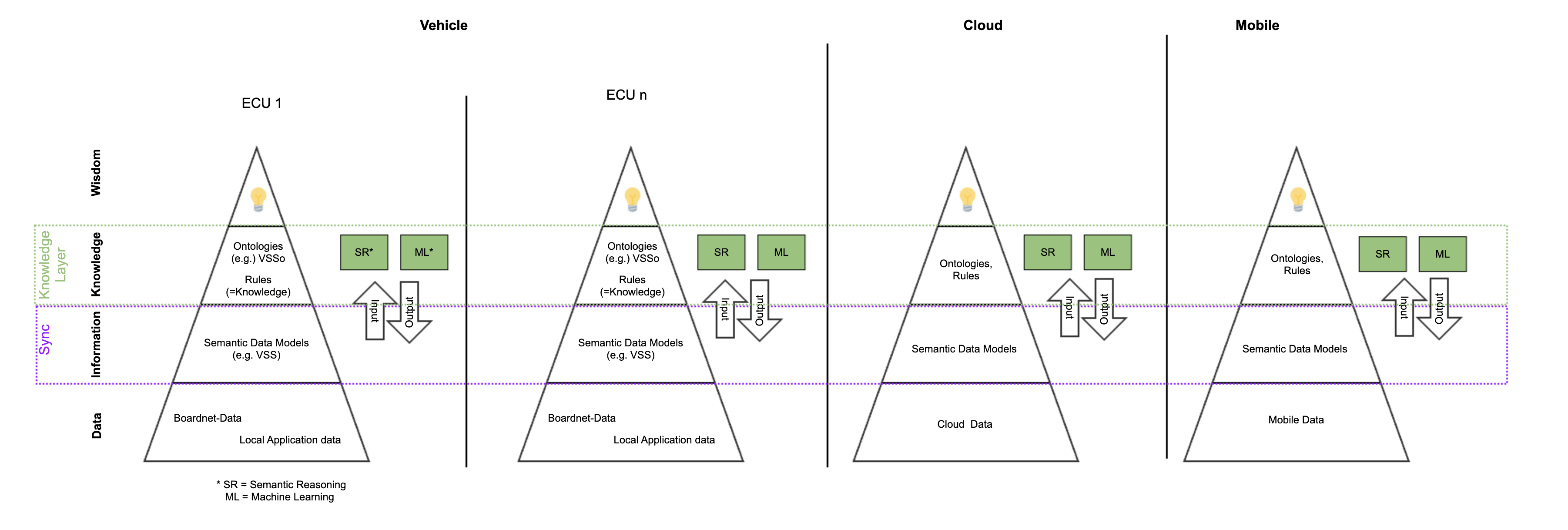
Proposal for Developing an Official Guideline on Data Architecture Standardization: Integration and Communication of (Generated) Knowledge in a Knowledge Layer of a Data-Centric Architecture

Title:
Guideline for Integrating and Communicating (Generated) Knowledge in the Knowledge Layer of a Data-Centric Architecture
Introduction:
The automotive industry, along with many other sectors, is currently undergoing a significant shift from application-centric to data-centric architectures. In this context, the need for a Knowledge Layer as part of the architecture becomes increasingly evident. A Knowledge Layer enables the effective integration and communication of generated knowledge - for example with the help of Machine Learning (ML) or Semantic Reasoning (SR) -, or knowledge which is explicitly or implicitly hidden in data models or logic like rules. However, it is necessary to outline how such a Knowledge Layer can be defined and implemented in a data-centric architecture and the impact it has on architecture decisions.
Challenges:
When developing a data-centric architecture with a Knowledge Layer, the following aspects are of particular importance and should be considered in the guideline:
Proposal:
As part of our initiative for data architecture standardization, we propose developing a comprehensive guideline that addresses the integration and communication of generated knowledge in the Knowledge Layer of a data-centric architecture. This guideline aims to provide practical guidelines and cover the following aspects:
Definition and design of the Knowledge Layer:
Handling and communication of knowledge:
Implications on architecture decisions:
Goal:
Through this guideline, we aim to provide architects, data experts, and industry decision-makers with a comprehensive foundation to enhance the handling of generated knowledge in the Knowledge Layer of a data-centric architecture and understand its impact on architecture decisions.
Presentation to the VSSo group 29th August 2023